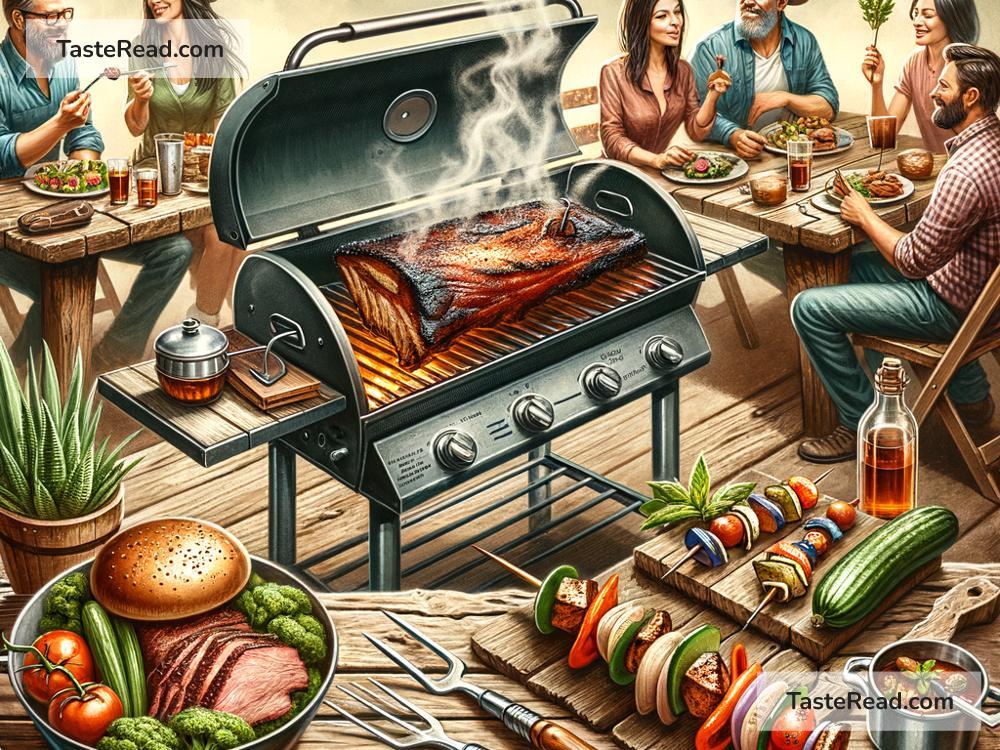The Evolution of Barbecue Techniques: From Ancient Fire Pits to Modern Grills
Barbecue is more than just a way to cook food — it’s a tradition that brings people together. Whether it’s the smoky flavor of ribs or the charred taste of grilled vegetables, barbecue has a unique ability to create memories and connections. But have you ever wondered how barbecue started and how it evolved over time? Let’s take a step back in history and explore the fascinating journey of barbecue.
Barbecue in Ancient Times
Barbecue techniques date back thousands of years. In ancient times, humans discovered fire and started cooking food over it. Cooking meat over a flame wasn’t just practical — it made food tastier and easier to chew. Early barbecue was likely done using open fire pits, where meat was placed directly on sticks or stones.
One of the earliest forms of barbecue was seen in cultures around the world. Indigenous peoples in the Caribbean practiced a style of cooking called “barbacoa.” They would use wooden sticks to build a frame over an open fire, slowly cooking meat and giving it a smoky flavor. Fun fact: The word “barbecue” is believed to have come from “barbacoa.”
Medieval Barbecue Techniques
As humans advanced, so did their cooking methods. During the medieval period, rotisseries became popular in Europe. Instead of placing meat directly on the fire, people used a rotating spit to cook meat evenly. This allowed for better control over how food was cooked and made it easier to handle larger cuts of meat.
Barbecue began to take on cultural differences. For example, smoked meats became popular in Eastern Europe, while Middle Eastern cultures developed techniques for grilling skewered meats like kebabs. These methods planted the seeds for the variety of barbecue styles we know today.
The Colonization Era and the Birth of American Barbecue
When Europeans colonized the Americas, barbecue began to take on new forms. Native tribes in North America used smoking techniques to preserve food, which inspired settlers to adopt similar methods. The settlers combined these practices with their own cooking styles, creating something unique.
American barbecue as we know it today originated in the southern United States, where enslaved African Americans played a big role in shaping barbecue traditions. They developed slow-cooking methods using pits filled with hot coals, which tenderized tough cuts of meat like pork shoulder and ribs. This style introduced the “low and slow” technique that defines Southern barbecue.
Barbecue also became tied to community celebrations. Large gatherings often featured “pig roasts,” where whole hogs were cooked for hours. People would come together to enjoy good food, music, and camaraderie — traditions that remain strong to this day.
Modern Barbecue Techniques
With the invention of grills in the 20th century, barbecue became more accessible to the average person. Charcoal grills, such as the iconic Weber kettle grill, made it possible for home cooks to enjoy barbecuing in their backyards. Gas grills became popular later, offering convenience and speed for those who preferred not to cook over charcoal.
In addition to grills, smokers started gaining attention among barbecue enthusiasts. Smokers use indirect heat and wood chips to imbue food with bold, smoky flavors. Today, you can find all kinds of barbecue equipment — from electric smokers to pellet grills — designed to suit different needs and budgets.
Globalization has also influenced modern barbecue techniques. For example, the Korean barbecue style involves grilling marinated meat on a tabletop grill, while Brazilian churrasco features skewered meats cooked over an open flame. These international styles have introduced new flavors and techniques to barbecue lovers worldwide.
Barbecue in the Digital Age
Technology has brought barbecue into the digital age. Many modern grills and smokers now come with smart features, allowing home chefs to control temperature and cooking time through apps on their smartphones. Temperature probes connected to devices ensure your meat is cooked perfectly every time.
The internet has also played a big role in spreading barbecue knowledge. Websites, blogs, and YouTube channels share recipes, techniques, and tips, enabling novices and professionals alike to perfect their barbecue skills. Social media has made it easy to connect with other barbecue enthusiasts and share the joy of outdoor cooking.
What’s Next for Barbecue?
Barbecue continues to evolve. As people become more conscious of health and the environment, plant-based grilling is becoming a popular trend. Vegetables, tofu, and plant-based proteins like “Beyond Meat” are being cooked on grills and smokers, proving that barbecue isn’t just for meat lovers.
Additionally, barbecue is increasingly embracing fusion cuisines. Chefs are combining techniques and flavors from different cultures to create exciting dishes. For example, you might find tacos filled with smoked brisket, or Asian-inspired barbecue sauces made with soy and ginger.
Conclusion
Barbecue has come a long way since ancient fire pits. From slow-cooking whole hogs to using high-tech pellet grills, the techniques have evolved to suit changing tastes and lifestyles. Yet, no matter the method, one thing remains the same: Barbecue is all about bringing people together over delicious, smoky food.
So the next time you fire up your grill or smoker, take a moment to appreciate the history and tradition behind the art of barbecue. You’re not just cooking a meal — you’re continuing a tradition that spans centuries and cultures, connecting you to people all over the world.

